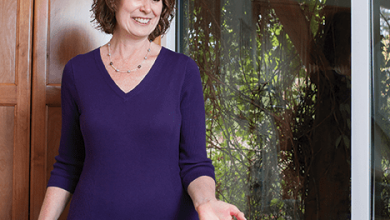Rebalancing the Body: Internal Dampness
When helping my patients adjust their diets for optimal healing, one of the most common modifications involves the over consumption of damp foods. This can be a confusing concept but one of great import to future overall health.
TCM (Traditional Chinese Medicine) is based on the Taoist concept of Yin and Yang, which are opposites. Chinese herbal formulas, acupuncture, Tui Na (Chinese medicinal massage), exercise, and diet are all effective means to rebalance Yin and Yang. You don’t want the body to run too hot or too cold, too much or not enough energy, too dry or too damp.
When thinking of dampness, think of oil or fat as opposed to water. If you soak a rag in oil it will never get dry, unless exposed to extreme or prolonged heat. So damp foods are oily or greasy foods, foods that cause fat in the body, or impair digestion. Especially during damp months of the year, overconsumption of these foods puts strain on the body that can lead to mild, or serious, chronic health issues. Though consuming a bit more of these foods during the dry months, or in dry areas of the world, can rebalance the body in a positive way, depending on an individual’s constitutional makeup.
Too much dampness in the body obstructs the flow of energy, or Qi (pronounced ‘chee’). Qi moves the blood, like currents move water in a river or stream. When there’s blockage of Qi, it can cause pain, or other health problems. It takes Qi to move blood. And since blood delivers nutrients and insulin to bodily tissues to enhance function and healing, it’s clear why delay or impairment of this conveyance could be detrimental to health and healing.
As we age, Qi, and blood which is liquid and therefore yin, naturally decline. Think of a babbling brook. At the beginning of the summer there’s plenty of current and water. The current is pushing the water, like Qi pushes the blood. If there are blockages of this energy, like a dam, it can impair the flow of blood.
Internal dampness is one of the causes of damming or blockage of this energy. If you pour oil into a stream, at the beginning of the summer, current and water will sweep it away. But at the end of summer, when there isn’t as much current and water, if you pour the same amount of oil into it, the result can be an oil slick, then a mass of congealed oil, that dams the current and water.
Like that late summer brook, as we age, there’s not as much Qi and blood to sweep the oil away. Pressure can build up behind a blockage, as behind a dam. This can cause pain, pressure or masses to accumulate. Too much dampness in the body is one cause of what the Chinese call Blood Stasis and Qi Stagnation: the old blood not moving out and the new blood not able to move in to nourish and heal the tissues.
One example of this is leg cramps. This type of cramping occurs mostly at night, or times of inactivity. Just as movement is required for the generation of electricity, exercise increases the flow of Qi, and consequently blood, in the body, keeping the blood and nutrients circulating. Calcium relaxes the muscles.
Trace minerals are necessary for absorption of calcium.
But if the blood can’t move these minerals into the muscles, they’ll get tighter and tighter until they start spasming.
This forces enough nutrients into the muscles so they can eventually relax.
Internal dampness congealed to phlegm can also cause what the Chinese refer to as ‘Internal Wind.’ Again, think of the dam, the built-up frenetic energy behind it. That pent-up energy in the Qi and blood can cause tremors and shakes. This can be a component of restless leg syndrome, convulsions, epilepsy and Parkinson’s.
Arthritis that’s worse when it’s cold and damp outside is another result of dampness obstructing the flow of Qi and blood in the body, resulting in pain. When tissues can’t get the nutrients they need, they hurt.
Respiratory issues such as mucous or phlegm in the nose, sinuses, throat, lungs or ears, resulting in pain or pressure, are also related to internal congealing of dampness. Dampness is an underlying issue of sinus headaches, as well as some other types of headaches, chronic cough, susceptibility to colds and flu, allergies, bronchitis, pneumonia, chronic post-nasal drip, and other chronic respiratory issues.
Mental lethargy, fogginess, and fatigue can also result from excessive dampness in the body. Again, think of a stream, slow-moving and filled with sludge. Sometimes people feel like their head is wrapped in a towel that is impairing their mental acuity. Or they may feel they are trying to slog through mud as they attempt to keep up with daily activities despite their fatigue. This can create a lack of motivation, often condemned as laziness, which actually has physical origins. Internal dampness and phlegm can also be a component of depression.
Signs of dampness can include a white coat on the tongue, teeth marks on the tongue with or without scalloped edges, or a lack of appetite, especially in the morning. The reason for lack of hunger, until later in the day, is that dampness has congealed into phlegm in the stomach. It takes a long time to process, and until the digestive system can do so, more food is unappealing. Nausea and morning sickness are also usually associated with phlegm in the stomach. Morning sickness can often be eliminated just by avoiding damp foods, especially dairy.
Masses, including tumors, cysts, fibroids and lumps are dampness that has congealed into phlegm. Think of the stream again, at summer’s end. Excessive oil can accumulate and create an oil slick, which can congeal into a solid glob, causing lumps. Essentially the same thing can happen various places throughout the body.
Milder symptoms of dampness and phlegm accumulation, as benign as chronic post-nasal drip, or the necessity to blow your nose throughout the day, are often the body’s way of warning you that more serious conditions are on the horizon if present ones aren’t addressed.
Reasons for damp and phlegm accumulations include an inability to digest fats. The body breaks down fat and phlegm in a similar way, so the two go hand in hand. Digesting fats, along with the various manifestations of dampness and phlegm, can be addressed with herbal formulas and Acupuncture. There are very specific formulas, and point prescriptions, for certain types of dampness, or phlegm accumulation, that target specific parts of the body.
Another reason for the accumulation of dampness, and phlegm, is diet, specifically overconsumption of damp foods.
Damp foods are oily or greasy, ones that create fat, or impair digestion. Oily or greasy foods include ones you could make into oils: seeds, nuts, avocado, coconut.
Seed or nut butters, and fried foods are also damp. Animal and vegetable oils are damp but are essential in a healthy diet. Adding additional fats, such as eating spoonfuls of coconut oil every day, or using coconut, nut or seed milks is discouraged when dampness is an issue.
Any kind of sweetener, with the exceptionof Stevia, is damp, since it causes fat in the body. Alcohol is essentially condensed sugar, and extremely damp.
Fruit and especially fruit juices are damp, since they’re sweet.
Overconsumption can cause problems, especially at times of the year when they wouldn’t be naturally available, in the colder months. Fruit is a healthy food, in small quantities, more appropriate in-season and in warmer months. Fruit juices should be a very occasional treat, and avoided in cases of dampness.
Raw foods are considered damp because they can impair digestion. Cooking vegetables, so they’re still colorful, crispy and crunchy, breaks down the outer membrane so they’re more easily digested. You lose some vitamins, minerals and live enzymes in the cooking process. But this is counterbalanced by making their nutrients more readily available. Raw foods are more appropriate in the summer time. People used to eat more raw foods in the summer and more cooked in the winter. Raw foods cool the body and cooked foods warm it up. With central heating now the norm, many intuitive dietary habits have gone by the wayside. Eating too many raw fruits and vegetables in cooler damper months makes it harder for people to maintain constant body temperature, avoid colds and flu and other damp-related health issues. Eating cold food, right out of the refrigerator, especially in cooler months also impairs digestion. The first thing the body has to do to digest food is to warm everything up to a 98 degree soup. Eating cold fruit, a cold raw salad, iced drinks, including ice water, or cold desserts, like ice cream, with a meal, is like trying to cook soup on the stove while throwing ice cubes in it.
It deters digestion and can contribute to internal dampness and phlegm.
Dairy is very damp and notorious for creating phlegm. Eating dark, green, leafy vegetables, which are slightly cooked, or massaged for five minutes, to break down the outer cellular membrane, is a more effective way of getting enough calcium than ingesting pasteurized dairy.
Eggs are damp, but are still a healthy food if not overconsumed or eaten every day.
Some foods that dry dampness include ginger, garlic, onions, scallions, and rice. Many Asian recipes employ these ingredients to counteract large amounts of oils, coconut milk or other damp foods used in recipes.
Dampness is an underlying factor in many chronic health problems. The Standard American Diet (SAD) encourages the overconsumption of sweets, dairy, nut butters, fruit, fruit juices, alcohol and other damp foods with no consideration for climate. In hot, dry areas, damp foods are more appropriate and help the body cope with its outer environment. In the cooler, wetter months, occasional and minimal consumption shouldn’t be problem as long as damp foods aren’t eaten on a daily basis.
Evaluating your consumption of damp foods, and finding a competent acupuncturist to help treat the results of excessive dampness, if you are experiencing them, can make an enormous difference in the way you feel presently and keep you healthy in years to come.
Health & Happiness,
Nancy Burton, L.Ac. (Licensed Acupuncturist).


